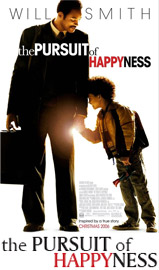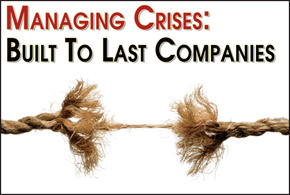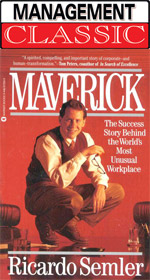Case Catalyst Archives


Home entertainment in India was never the same after the entry of cable television. For a long period of time Local Cable Operators (LCOs) dominated the market although they did not provide good program quality and signal transmission to subscribers. The emergence of Direct-to-Home (DTH) option in 2003 threatened the dominance of LCOs giving them a tough competition. DTH operators, however, did not have the critical mass of subscribers to sustain their operations. This case study provides the scope to explore the market for DTH in India and the various challenges faced by DTH operators in an unorganised cable TV market. It tries to reason out the underlying reasons for several new players venturing into the market, despite those challenges. In such circumstances, can DTH industry thrive in India? |
 In March 2009, IBSCDC conducted video interviews with Shalini Kadaveru, Co-founder and CEO of Yellow Stone Pharmacy Pvt Ltd. and Kalyan Manyam
CEO of Indyarocks.com.
In March 2009, IBSCDC conducted video interviews with Shalini Kadaveru, Co-founder and CEO of Yellow Stone Pharmacy Pvt Ltd. and Kalyan Manyam
CEO of Indyarocks.com.
In this video interview Mrs. Shalini Kadaveru talks about her journey from holding various senior management positions in Fortune 500 companies to starting her own entrepreneurial venture Yellowstone Pharmacy Pvt Ltd which operates the Rite Care chain of pharmacy stores. She elaborates on the challenges she faced initially and how she dealt with those challenges.
Kalyan Manyam, CEO of Indyarocks.com, in his video interview talks about the origin of the idea for a social networking site for Indians, the unique features of the site, the marketing strategies adopted to promote the site and the future plans for the venture. He also shares his views on the qualities needed to be a successful entrepreneur. |
|||

After its entry into India in 1996, Whirlpool was able to capture a significant share of the market for direct-cool refrigerators and washing machines using its customer-centric approach. Competition, however, emerged in the form of LG and Samsung who offered superior affordable products and used unique marketing strategies to promote them. This case study delves into the reasons behind Whirlpool succumbing to competition and the measures taken by the company to revive its operations. It also debates on the probability of sustaining its turnaround amidst tough competition. | ||||
 The US financial crisis not only had a major impact on the US economy but had a tremendous impact on the rest of the world as well. The cause - the integrated nature of the world economy -brought on by globalisation. This case study analyses the effect of financial globalisation and the need for more regulations in global capital flows. It describes the credit-driven purchasing pattern among American consumers and its impact on the economy. It also reasons whether the crisis could have been averted if the government had curbed the excessive lending by banks and kept the deficits at reasonable levels. | ||||
.jpg)
This case study is third in the Satyam Computers' Corporate Governance Fiasco case study series. It provides insights into the confessions of the CEO B. Ramalinga Raju about how he tampered with the books of accounts and how he held that he was the only one involved in the fiasco. The case study discusses the possible options that the company, its top management, and the government are left with after the confession of its CEO. |

 “Don't ever let somebody tell you... You can't do something. Not even me. All right?” An exemplary example of how motivation can play a big role in achieving success, this movie is a touching revelation of one man's ‘pursuit’ of trying to make it big. It describes how times of crisis and the desperation to protect and provide basic necessities for his son, led one man to risk everything he has and take up a non-paying internship at a brokerage firm. Based on the true story of Christopher Gardner who went from a homeless single parent to a successful stock broker, watch this movie for the brilliant portrayal by Will Smith of a man struggling to make ends meet. The movie is an important lesson for those who hesitate to take risks and how the right kind motivation is the key to achieve formidable success. |
|||


The Great Depression, the Oil Crisis, the South East Asian financial crisis, the 2008 US financial crisis and many such crises in history have created very challenging circumstances for companies to operate in. While some companies were lost in oblivion some managed to weather the challenges and survive. What was so unique about these companies? How did they manage to overcome the tough market conditions? The Managing Crises case series tries to address many such similar questions covering several aspects of a company's operations during times of crisis like leadership, strategy making, innovation, employee concerns etc. This is the first case in this series which attempts to detail the various crises which have occurred over the years, the repercussions of those crises on different economies and more specifically different companies. It illustrates companies which have successfully tackled various crises and the strategies employed by them. It tries to identify the commonalities between the companies which have survived and ascertain whether leadership played a major role in their success. It also tries to evaluate the impact of the 2008 US financial crisis and its ramifications. | ||||
.jpg)
After the candid confession of B.Ramalinga Raju about how the company cooked the books for several years, the Government of India, through the Ministry of Company Affairs intervened to take charge of the situation. The government cancelled the existing board of Satyam and replaced it with a new board comprising of eminent people with proven track records in their respective areas. The case study tries to explore how government intervention was necessary to revive confidence among various stakeholder groups – the clients, the investors, the employees – and to safeguard the image of 'Brand India'. | ||||
|
||||











